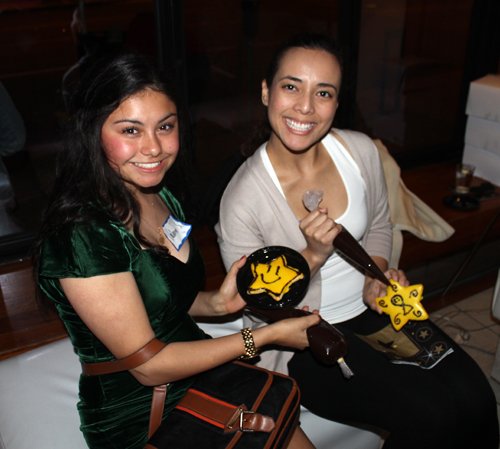We love Earth Month. April is a time of renewal and rejuvenation, a time for millions to reflect on the health of the natural resources on which we all depend. But the reality is that every month is Earth Month for Heal the Bay. Our passionate staff members and dedicated volunteers work hard throughout the year to guard Southern California’s rivers, beaches and oceans. Protecting what you love is a 365 day-a-year job – be it fighting for strong pollution limits, providing hands-on marine education to local students or restoring habitat in degraded waterways.
 We don’t take our local beaches and local neighborhoods for granted, and we know you don’t either. Whether you’ve joined one of our beach cleanups, visited our Santa Monica Pier Aquarium or just shared one of our social media posts with your network of friends, you’ve shown a deep commitment to our shorelines and the animals that call it home.
We don’t take our local beaches and local neighborhoods for granted, and we know you don’t either. Whether you’ve joined one of our beach cleanups, visited our Santa Monica Pier Aquarium or just shared one of our social media posts with your network of friends, you’ve shown a deep commitment to our shorelines and the animals that call it home.
In honor of Earth Month, we’re asking you to go a step further. By committing to a modest monthly gift of $9, you’ll help sustain our work year-round. You’ll also become a card-carrying Heal the Bay Hero.
$9. What can it really get you these days? Maybe we’re biased, but we’re willing to bet you’d prefer a month of clean beaches to buying a single designer cocktail or a movie ticket to the latest vampire meldorama. In appreciation of your gift, we’ll also send you a limited edition t-shirt designed by celebrated local artists Tim Biskup and Florencio Zavala so you can literally wear your love of the ocean on your sleeve. You can also snag a shirt at ZJ’s, Channel Islands Scuba or at this Saturday’s Earth Month Extravaganza at the Santa Monica Pier, while supplies last. Beginning May 1, you’ll be able to purchase shirts via our website!
30 cents a day may not sound like an heroic amount, but recurring gifts from Heal the Bay Heroes will provide us with a reliable stream of funding while allowing donors like you to spread out your charitable giving more manageably throughout the year.
Over the course of the year, your donation would underwrite any of the following:
- Reusable supplies for five volunteer beach cleanups
- Two days of water quality testing at our local rivers
- Training for four volunteers to monitor newly established Marine Protected Areas
- Bus rides and a day of hands-on marine education for 60 underserved students
Your gift today will help us protect the Bay year-round. Who knew becoming a Hero could be as easy as setting aside 30 cents a day?
P.S.–Heal with your hands as well as your wallet! Check out our list of Earth Month goings-on here.
Follow @healthebay on Vine for our ongoing #HtBHero video series



 For someone steeped in the world of nonprofits, the entertainment industry remains a bit of a mystery. Hollywood is something you read and hear about constantly, but it’s not something most people get to experience first-hand. So I was pretty star-struck to sit at a table with Julia, Jane Fonda, Bobby Kennedy and Cheryl Hines. Who would have thought that I’d ever be having a conversation with Jane Fonda during Oscar week about blue whales in Santa Monica Bay?!
For someone steeped in the world of nonprofits, the entertainment industry remains a bit of a mystery. Hollywood is something you read and hear about constantly, but it’s not something most people get to experience first-hand. So I was pretty star-struck to sit at a table with Julia, Jane Fonda, Bobby Kennedy and Cheryl Hines. Who would have thought that I’d ever be having a conversation with Jane Fonda during Oscar week about blue whales in Santa Monica Bay?! The
The